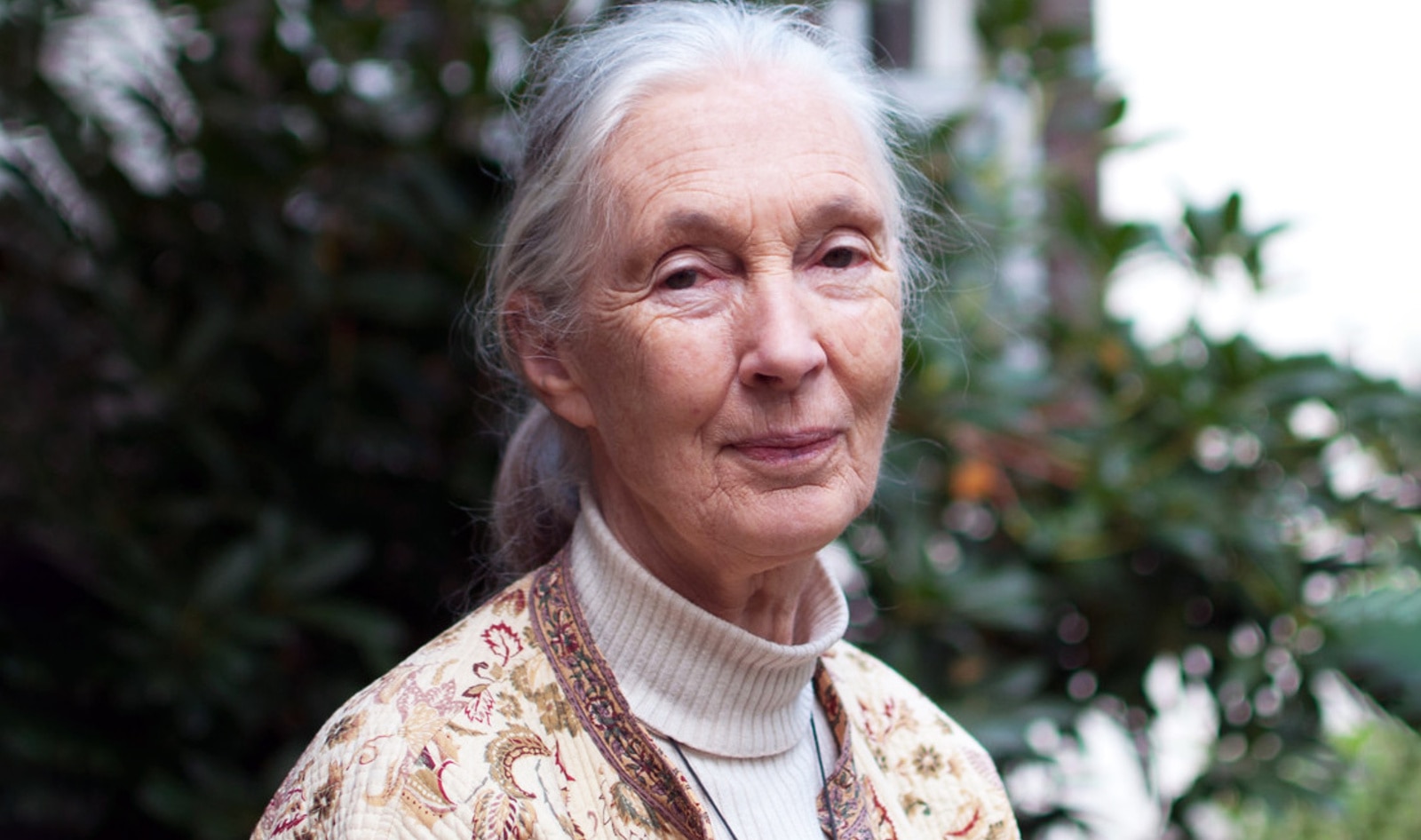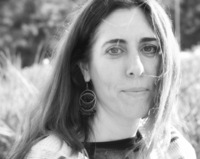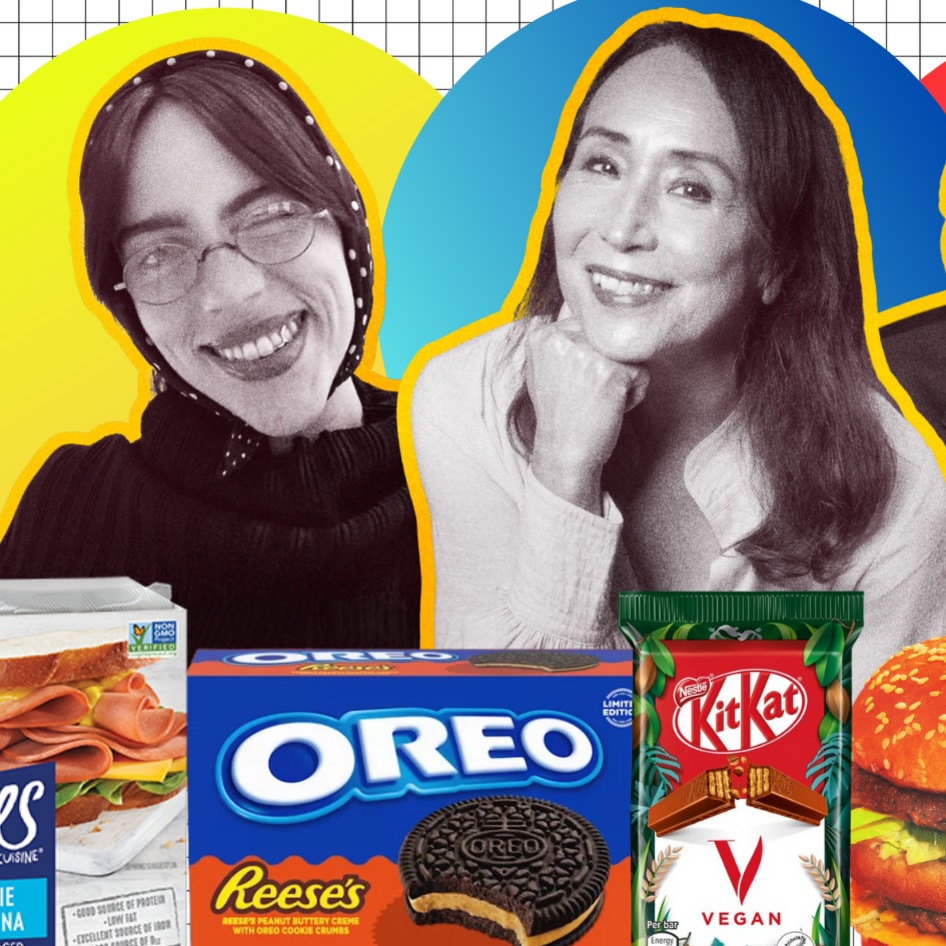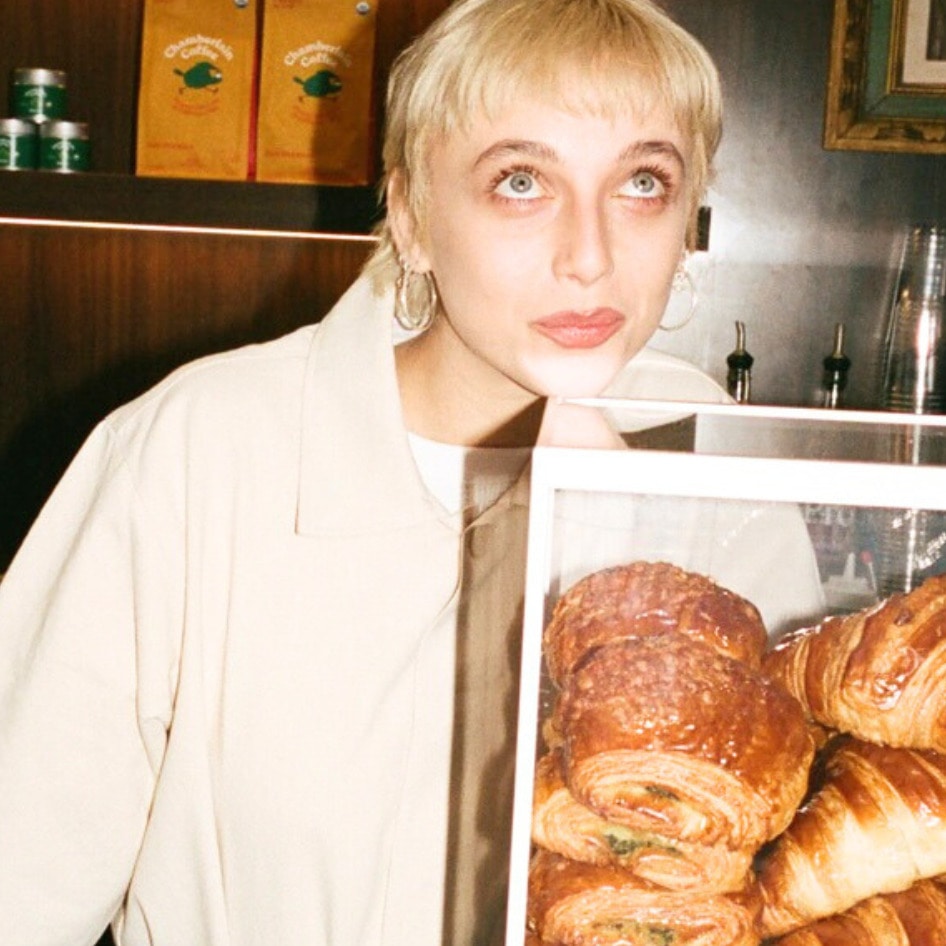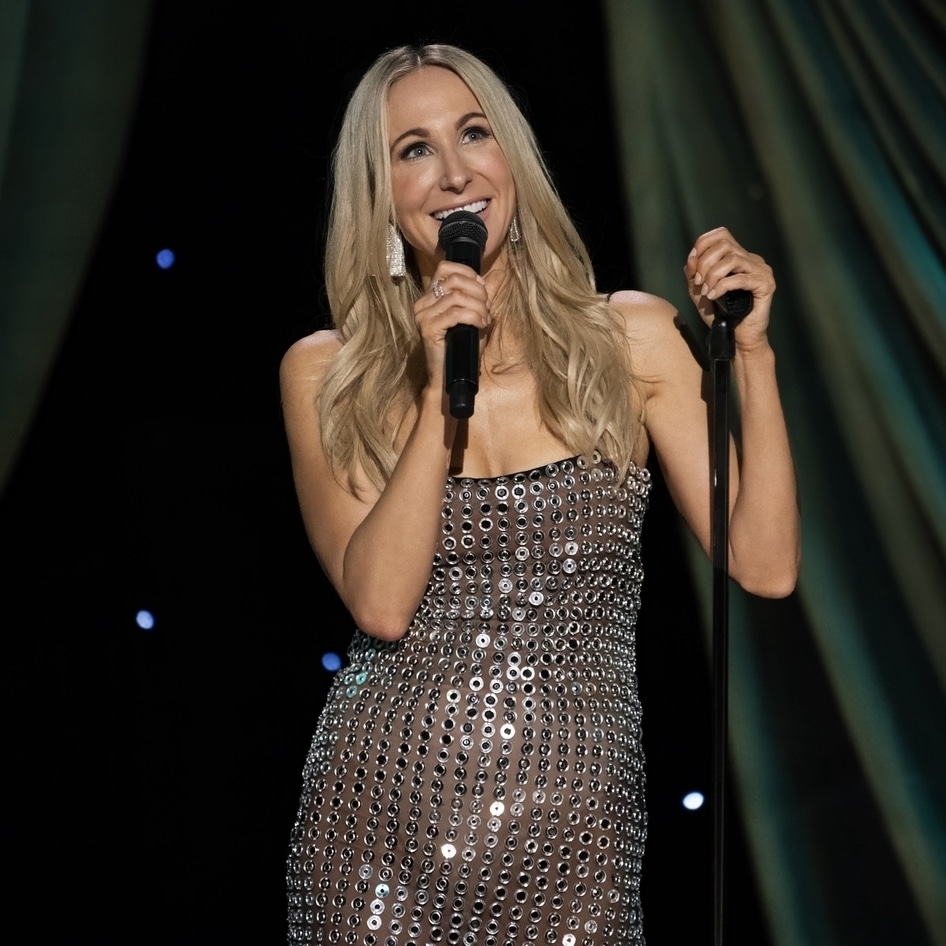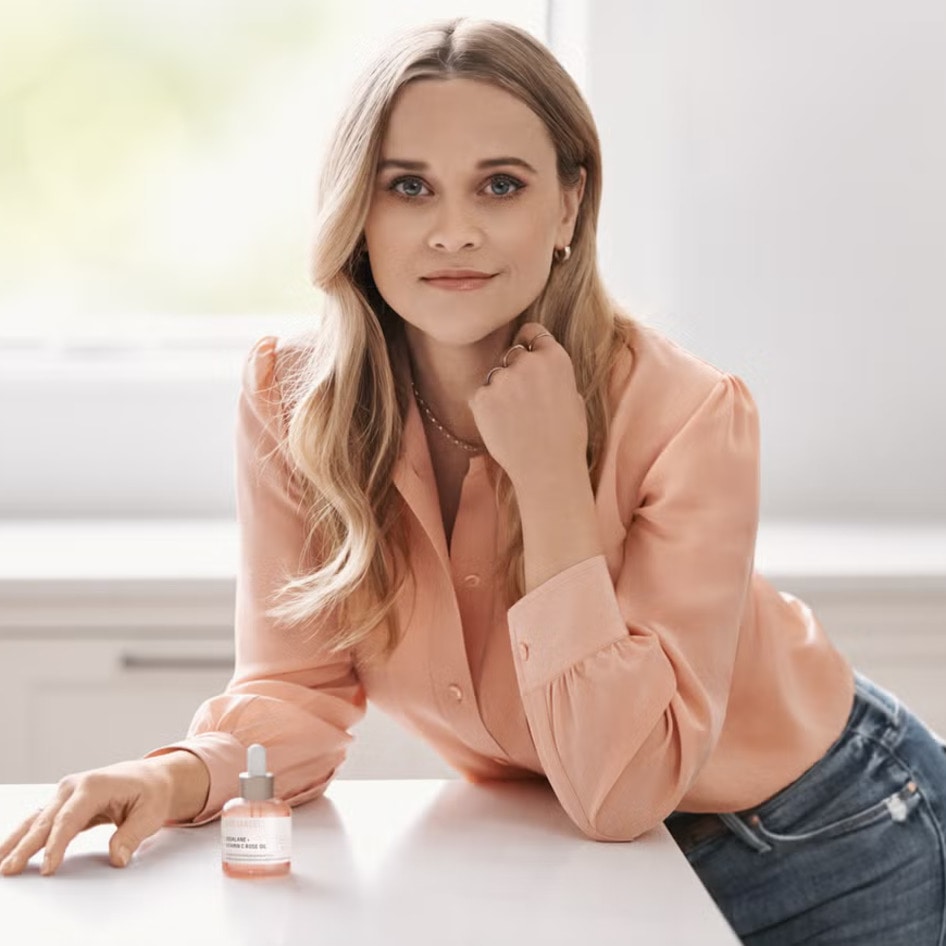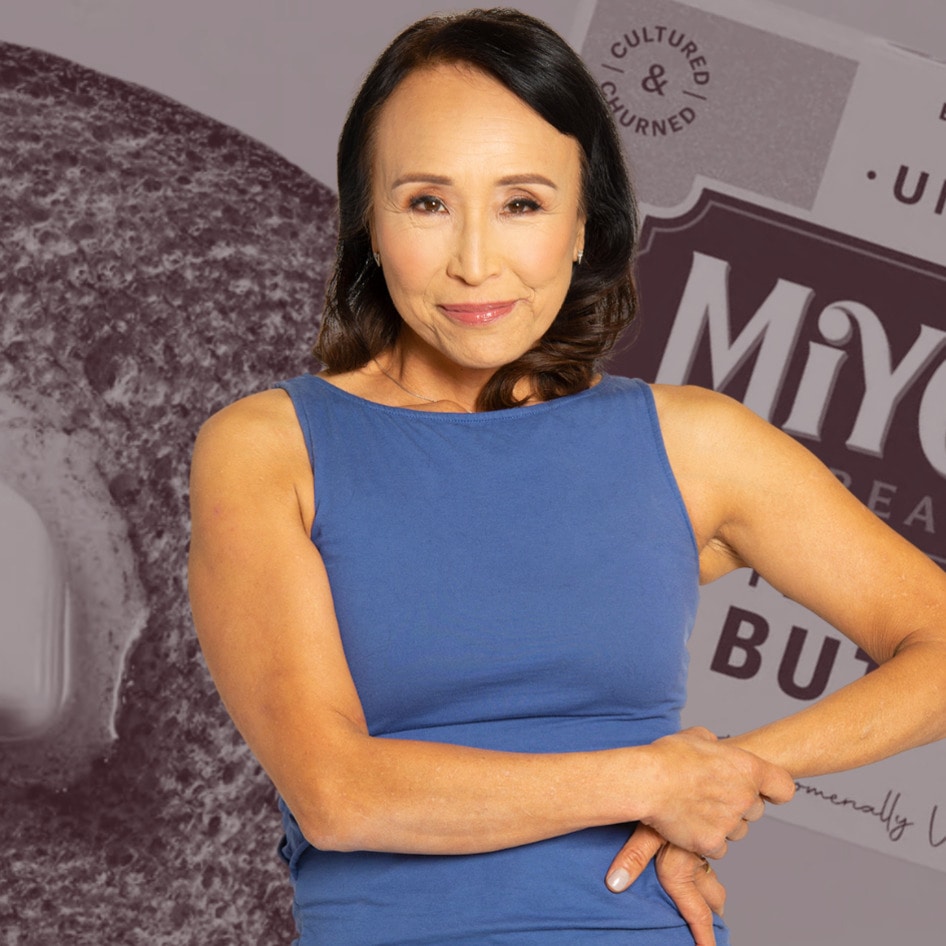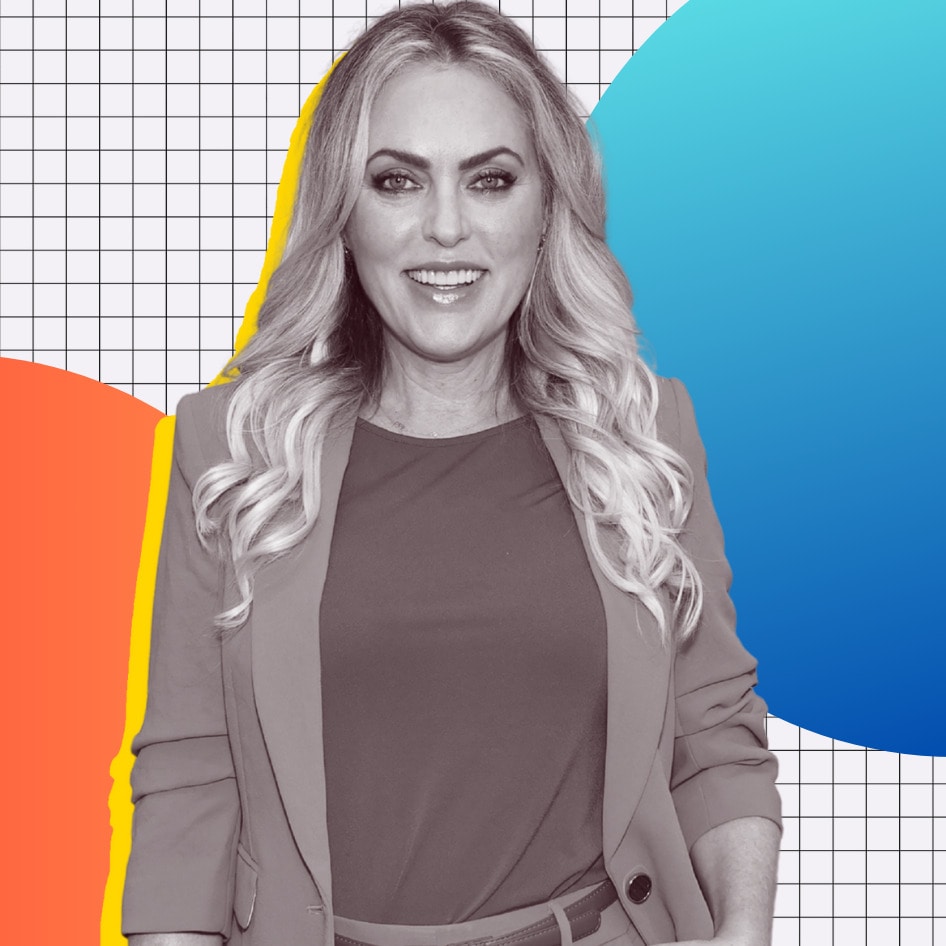I don’t do red carpet press coverage. I prefer less distracting environments when conducting interviews. Like author Susan Orlean, my ideal interview process would be days of following someone through their daily routines, mostly observing, and only asking questions when necessary.
But for Jane Goodall, I made an exception. I headed out to the red carpet. It was 2017, and I’d just started working with the platform Livekindly—still in its infancy. An invite came in from National Geographic. Would I be interested in attending the world premiere of Jane, the Brett Morgen-directed documentary on Jane Goodall, one of my lifelong idols (isn’t she everybody’s idol by now?!)? The film was scored by Philip Glass, another one of my idols.
No was never an option.
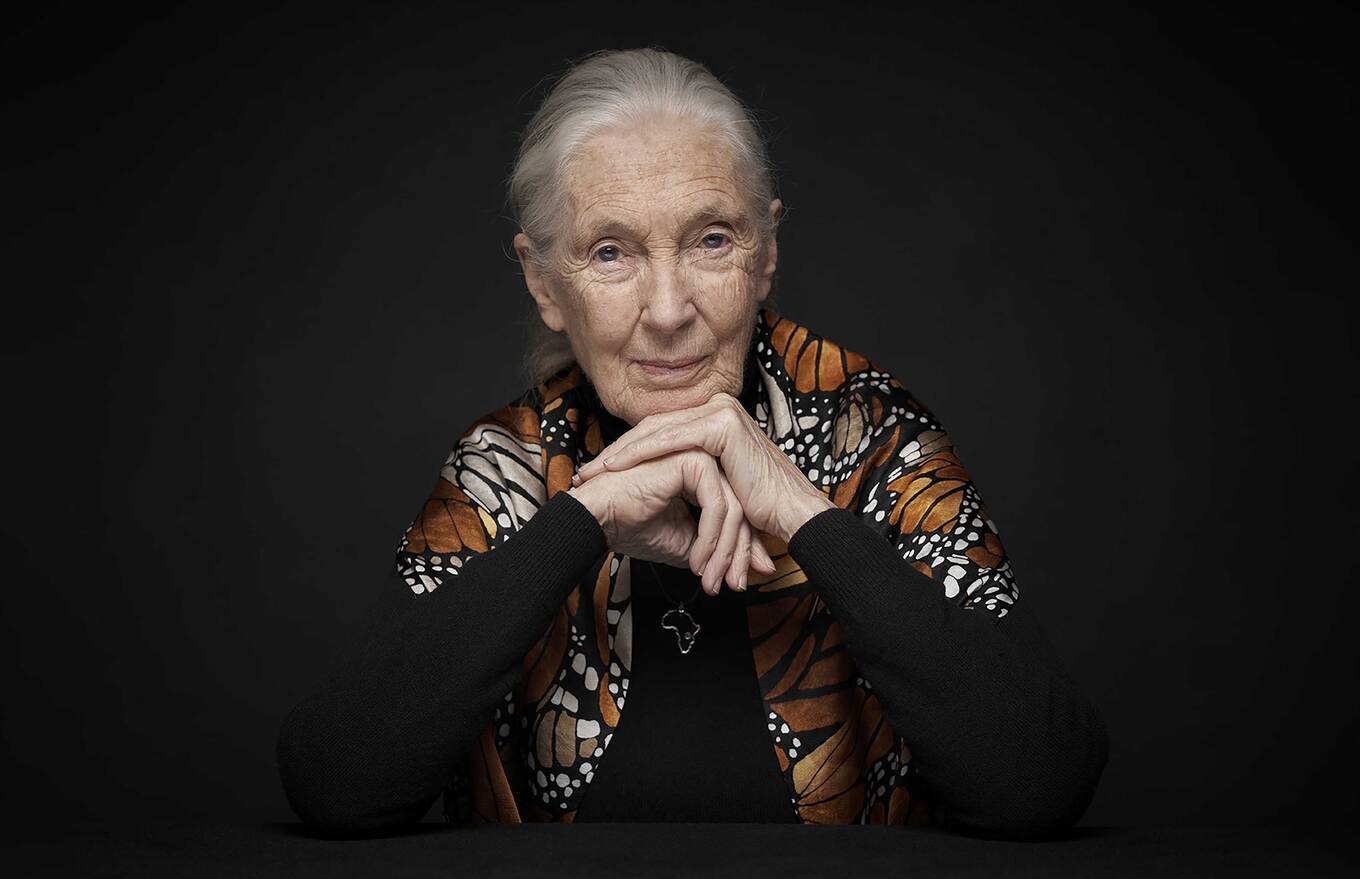
The event took place at the iconic Hollywood Bowl, and celebrities came out in full force to celebrate Goodall. Everyone from Angelina Jolie and Judd Apatow to Jamie Lee Curtis and Jane Lynch made their way down the red carpet.
So for this night, I took my place among the throngs of photographers and reporters as the stars sang Goodall’s praises. Howie Mandel compared her to Jacques Cousteau and Mother Teresa. Curtis called her “extraordinary” and said she is “maybe the biggest role model for women I will have ever had.” The compliments kept coming. And when Goodall eventually made her way down the red carpet (it was actually a green carpet), a hush fell over the press line.
It was, I imagined, what it must be like when the then-Queen Elizabeth would make an appearance. It felt unreal. What a rare and wonderful human being she was, tirelessly working for literal decades to help us all better understand the world we live in. And that was the thing: we all knew she was different than us, almost like another species where purity and kindness had no limits.
When Goodall died yesterday, right here in Los Angeles at age 91, the world paused to honor the scientist whose name was synonymous with chimpanzee research. But her impact stretches far beyond the Gombe reserve where she first made her mark. Over six decades, she transformed not only primatology but the moral contours of how we treat all animals.
From Gombe to a new ethic
Goodall began her fieldwork in 1960 at Gombe Stream National Park, Tanzania, despite lacking formal scientific credentials—a bold departure from conventional norms. Her observations overturned the assumption that tool use was uniquely human, showing chimpanzees fashioning sticks to fish for termites, hunting cooperatively, and exhibiting personalities and emotional bonds. Those findings fundamentally shifted the understanding of human-animal boundaries.
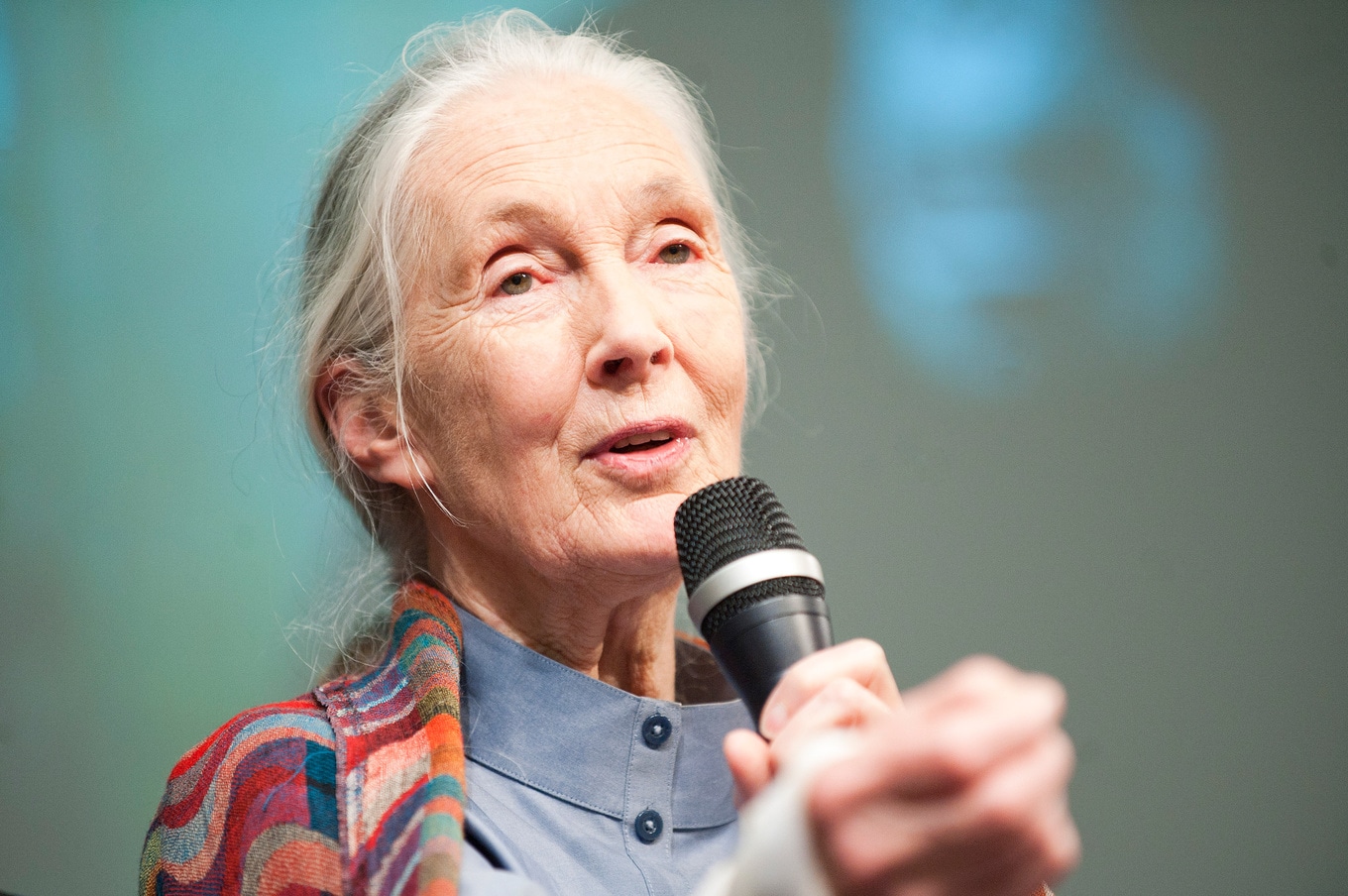
She established the Jane Goodall Institute in 1977 and later launched the youth outreach program Roots & Shoots in 1991. That initiative now reaches hundreds of thousands of young people across the globe, engaging them in wildlife protection, climate action, and grassroots community projects. In later years, Goodall framed conservation not as a domain for specialists but as a moral impulse rooted in compassion across species.
Celebrities and public figures responded quickly after her passing. Leonardo DiCaprio, who had long collaborated with her as a fellow UN Messenger of Peace, said in an Instagram tribute, “For decades, Jane traveled the world with tireless energy, awakening generations to the wonder of the natural world … She never stopped.”
Actor Michael Douglas posted, “RIP to my fellow UN Messenger of Peace, Dr. Jane Goodall … Her legacy will forever be remembered for her unwavering dedication to our planet.”
Actress Jane Fonda remembered Goodall’s voice in animal advocacy, noting the ways she wove intelligence and empathy into her public work.
Jane Goodall’s opposition to factory farming
If many remember Goodall for chimpanzees and conservation work, fewer know how vigorously she took on industrial animal agriculture. That fight was central to her vision of a just world.
In a 2024 essay published by the Jane Goodall Institute, she summed up her view plainly: “Pain, fear, death.” She called factory farms “amongst the worst atrocities ever perpetrated by humanity.” She spoke of visceral memories: “Their misery and hopelessness kept me awake … forced into trucks … so closely packed together they cannot move … I can never forget looking into the eyes of the cattle in such a truck.”
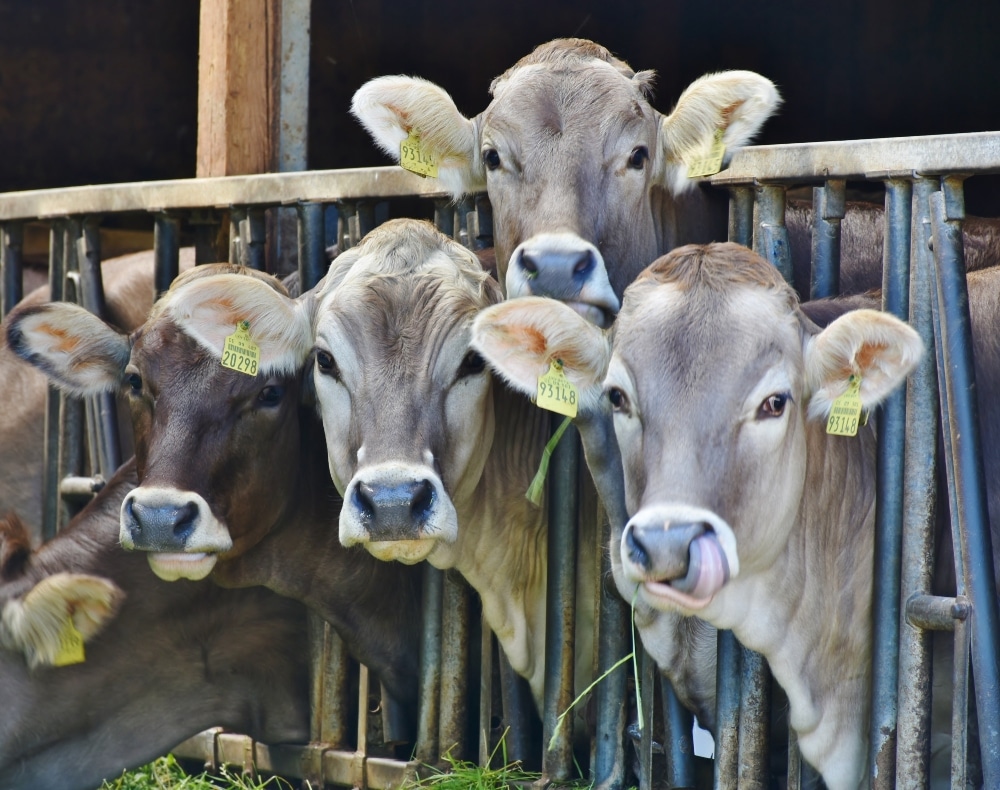 Pexels
Pexels
BECOME A VEGNEWS VIP: Get exclusive product deals, freebies, and perks galore!
Her moral objections ran parallel to environmental critique. Today, farmed animal agriculture is responsible for roughly 14.5 percent of all human-caused greenhouse gas emissions. The environmental spillover is staggering: producing feed, deforestation to grow feed crops, methane from manure—all multiply the climate footprint.
The scale of suffering is harder to grasp, but even more impossible to ignore: globally, about 77 billion farmed animals are killed for food each year—that’s on average 211 million per day, or around 2,442 every second. Over 90 percent of farmed animals worldwide live in industrial systems (including more than 74 percent of land animals). In the US, the figure is nearly universal: 99 percent of farmed animals live in factory farms, including 98.6 percent of pigs and 99.8 percent of turkeys.
Agricultural census data reveals the structural shift: the number of individual farms shrank over the last several decades, but large concentrated animal feeding operations (CAFOs) have grown in size and influence. In Europe, too, more than 24,000 megafarms have emerged in recent years, mirroring US industrial models.
Goodall pushed this narrative forcefully: “I have for decades been concerned about factory farming … because of the tremendous harm inflicted on the environment, but also because of the shocking ongoing cruelty perpetrated on millions of sentient beings.”
She called farm animals “individual beings in their own right” and asked: “Who will plead for them if we are silent?”
Her critiques, always gentle, always kind, anticipated growing scientific evidence. The emissions, land use, antibiotic resistance, zoonotic risk, and biodiversity loss from factory farming now form part of mainstream environmental discourse. Her moral framework helped seed that shift. “Only if we understand, can we care,” she said. “Only if we care, we will help. Only if we help, we shall be saved.”
Goodall dedicated her life to these conversations, traveling an astounding 300 days a year until her death. People would come to see her for the chimpanzee stories—and she never tired of telling them—but they became a Trojan horse of sorts, allowing her to push the conversation toward our understanding of all animals, all over the world.
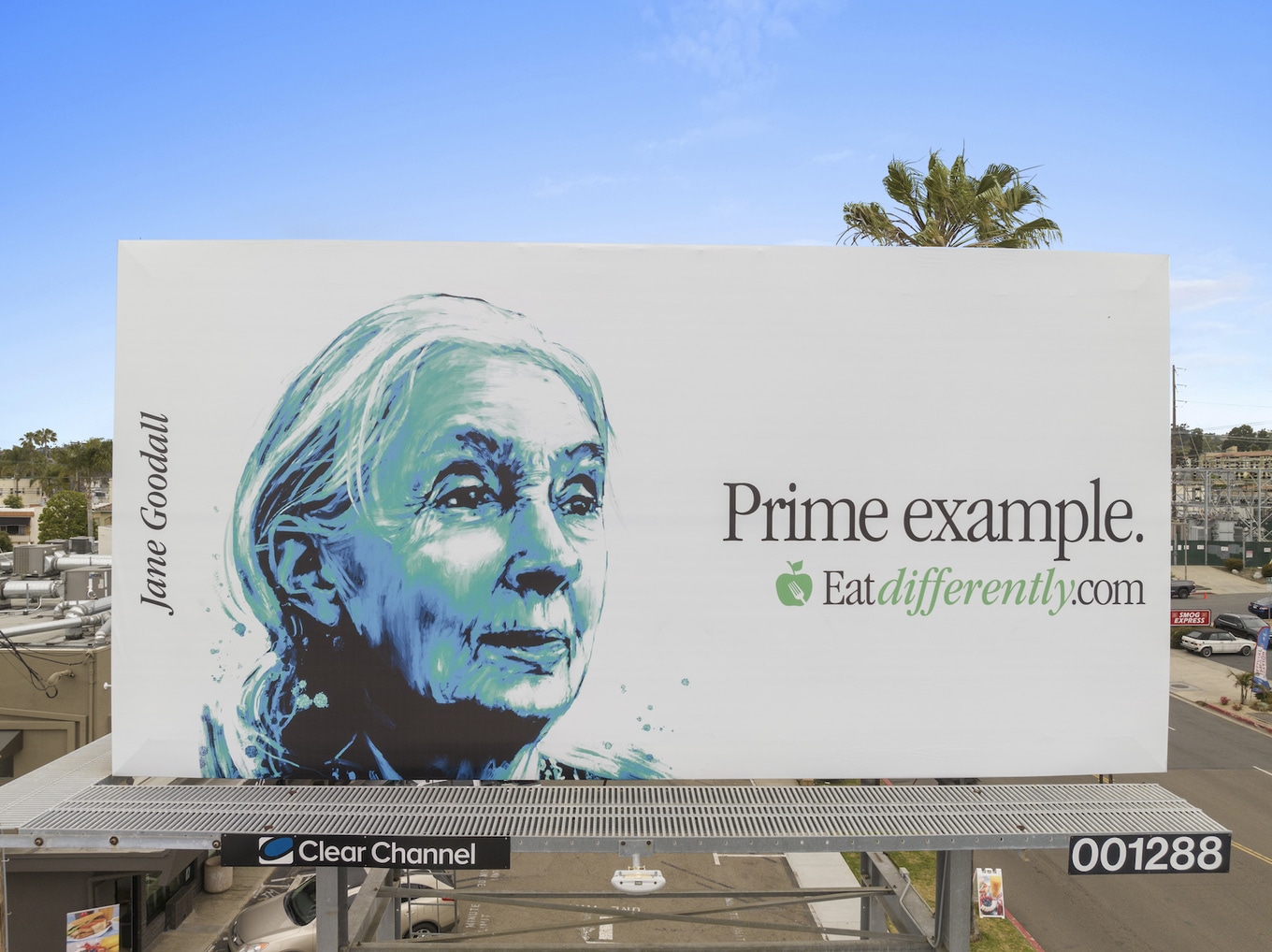 Eat Differently
Eat Differently
“My job now is to try and help people understand every one of us makes a difference,” she told The Washington Post. “And cumulatively, wise choices in how we act each day can begin to change the world.”
After the Jane red carpet premiere, I shared the film with my daughter, then just four years old. And, like virtually everyone else, once she learned about Goodall’s work, she became obsessed. We watched the documentary many times over. We hung stuffed chimpanzees from her bed frame and took larger ones “out for walks.” One of our favorite bedtime story books became The Watcher, a kid-friendly telling of Goodall’s work in Gombe. And although my daughter is now 12, it still sits proudly on her bookshelf to this day.
“The greatest danger to our future is apathy,” Goodall once warned. She proved the opposite with every mile traveled—thousands a year until her death, fueled by the conviction that indifference could be undone. To honor her means to do what she asked of us all: to care enough to act.
For more plant-based stories like this, read:
JUMP TO ... Latest News | Recipes | Guides | Health | Subscribe

